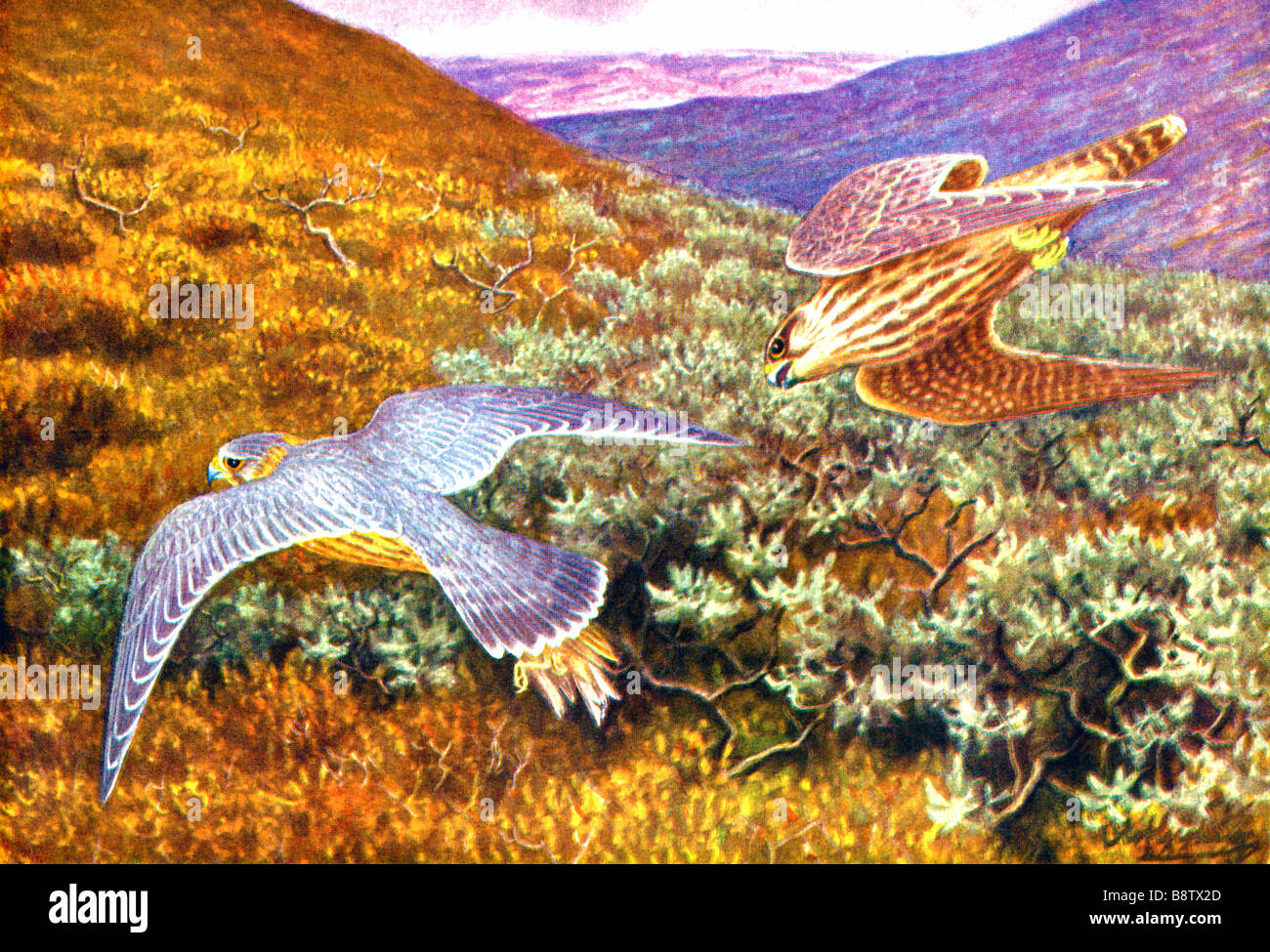The Merlin (Falco columbarius), old male and female, illustrated by Olof Gylling (1850-1928)

Image details
Contributor:
markku murto/art / Alamy Stock PhotoImage ID:
B8TX2DFile size:
51.5 MB (4.7 MB Compressed download)Releases:
Model - no | Property - noDo I need a release?Dimensions:
5140 x 3500 px | 43.5 x 29.6 cm | 17.1 x 11.7 inches | 300dpiMore information:
The Merlin (Falco columbarius) is a smallish falcon that breeds in northern North America, Europe and Asia. In North America it was once and sometimes still is colloquially called "pigeon hawk" though being a falcon it is not very closely related to true hawks. This bird of prey is 24-33 cm (9.5-13 in) long with a 53-69 cm (21-27 in) wingspan. Males average at about 165 g (5.8 oz) and females are typically about 230 g (8 oz). Compared to other small falcons, they are more robust and heavily built. The male Merlin has a blue-grey back and orange-tinted underparts. The female and immature are dark brown above and whitish spotted with brown below. American subspecies range from pale (Great Plains) to nearly black (Pacific Northwest). Besides a weak eye-stripe in adults, the faces are less strongly patterned than most falcons. Light males may resemble the American Kestrel, but the grey, not brown back and tail of the Merlin are characteristic. The relationships of the Merlin are not resolved to satisfaction. In size and coloration, it is fairly distinct among living falcons. The Red-necked Falcon is sometimes considered more closely related to the Merlin than other falcons, but this seems to be a coincidence due to similar hunting habits; it could not be confirmed in more recent studies. Indeed, the Merlin seems to represent a lineage distinct from other living falcons since at least the Early Pleistocene, some 5 mya (million years ago). As supported by biogeography and DNA sequence data, it might be part of an ancient radiation of Falcos from Europe to North America, alongside the ancestors of forms such as the American Kestrel, and the Aplomado Falcon and its relatives